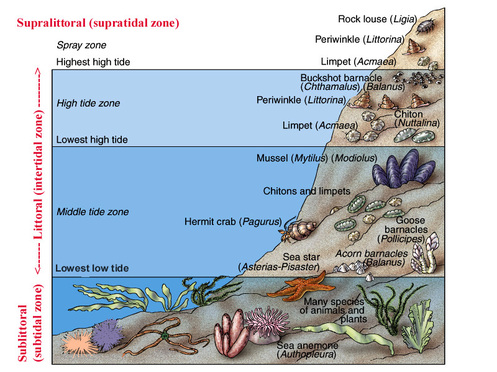Sponges are simple invertebrates that live in aquatic habitats. Most sponges are marine, but some species live in freshwater lakes and streams. They are found in shallow marine environments up to a depth of 5 kilometers (km). The sponge is on the ocean floor or attached to substrates such as rocks, corals, shells, and marine life. Sponges extend to habitats from shallow intertidal zones and coral reefs to the deep sea. Where is the living sponge? Most sponges are found in the ocean, but many species are also found in freshwater and estuaries. Sponges are strong animals with a dense skeleton that is well adapted to the environment. They can adapt to the areas and surfaces in which they grow, as they can live almost everywhere. Certain sponge species adapt to freshwater environments. Their skeletal type allows them to live in either hard or soft deposits. Sponges, or more commonly known as sponges, are invertebrates that live in water. In real life, sponges cannot walk or swim, so they are eaten by filter feeding. Many sponges breed by "budding". This is when a piece of sponge breaks into a complete animal.
Sponge is the sea, lakes, rivers, springs, swamps, swamps, rivers, caves, other underground locations, and even temporary bodies of water. Polyfera is generally very resistant, but freshwater sponges are a special case.
Where does the sponge live in the sea?
Habitat (where they live, adaptation) Sponges can be found in almost any water habitat. Most live in marine waters, but up to 150 sponges are adapted to freshwater climates.
How does the sponge adapt to the environment?
Most of them live in marine waters, but up to 150 types of sponges are adapted to freshwater climates. Many sponges contain toxic substances that discourage predators, so other marine animals protect themselves by attaching sponges to their bodies to allow them to grow.
Is the sponge a vertebrate?
Sponge is a kind of animal that lives in the world's oceans. These sponges are invertebrates. That is, there is no spine. Sponge can come in a variety of colors, sizes and shapes. Few animals eat sponges, so they can live very long.
Did you know that kitchen sponges are made from sponge?
Believe it or not, your kitchen sponge may actually come from sponge! Sponge is a type of animal that lives in the world's oceans. These sponges are invertebrates. That is, there is no spine. Sponge can come in a variety of colors, sizes and shapes.
Do sponges provide habitat?
Sponges provide a structural habitat for food and / or shelter from predators of fish and crustaceans (Butler et al. 1995; Ryer et al. 2004; Miller et al). .2012). Some sponge-related species are also commercially important to the fishing industry.
Where is the tropical sponge?
Most sponges are marine, from the intertidal zone to the deepest trenches, but few species live in freshwater habitats. Even today, sponges are the major organisms on the ocean floor, including coral reef ecosystems.
Do sponges live everywhere?
Sponges can be found all over the world, from shallow coral reefs to deep trenches. They live in both marine and freshwater environments and come in a variety of shapes and sizes.

Below you will find two helpful answers on a similar topic. 👇
Why can reptiles hold their breath for so much longer than birds and mammals?Where do sea sponges grow?
